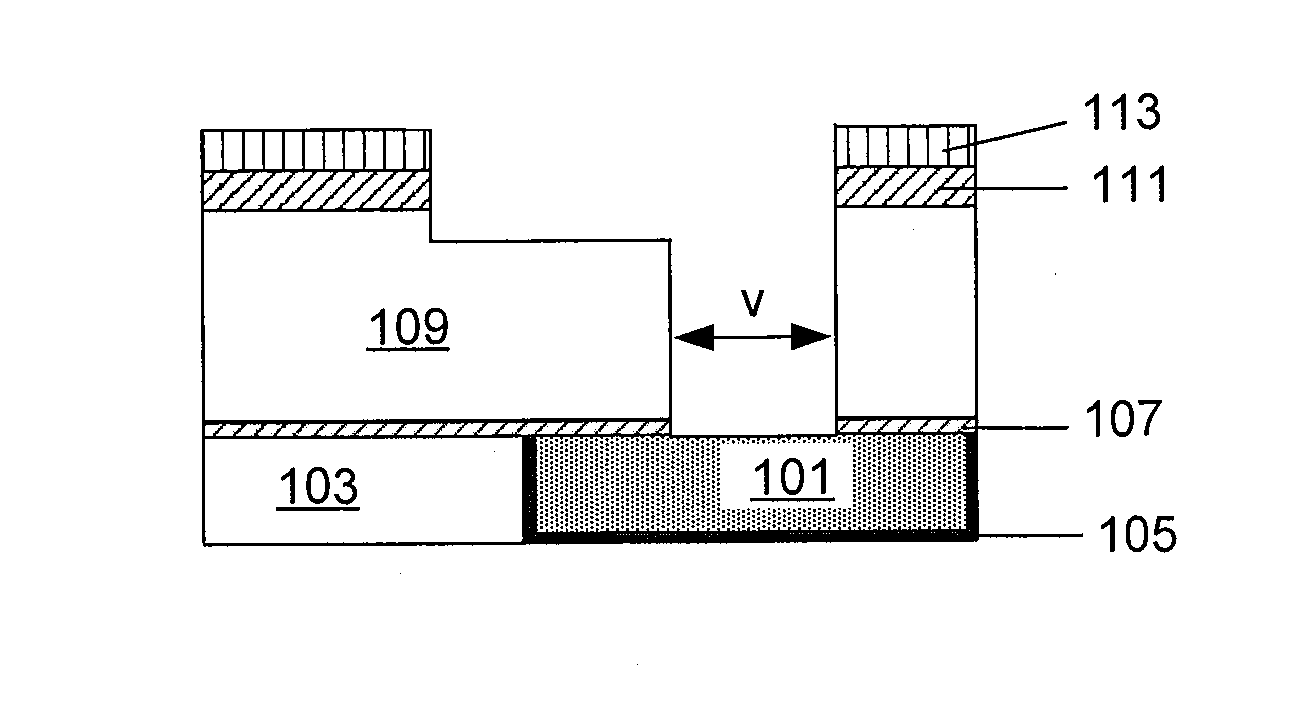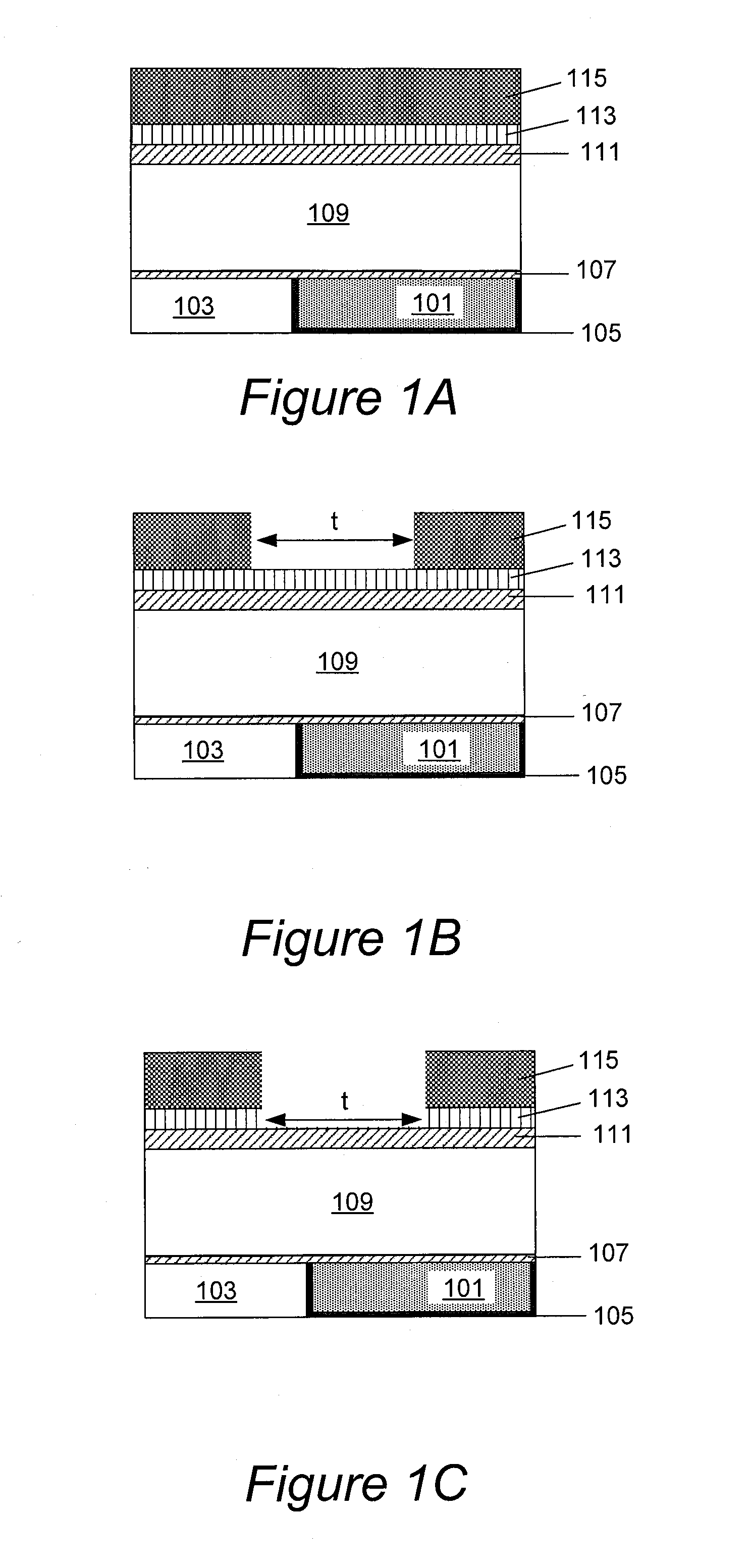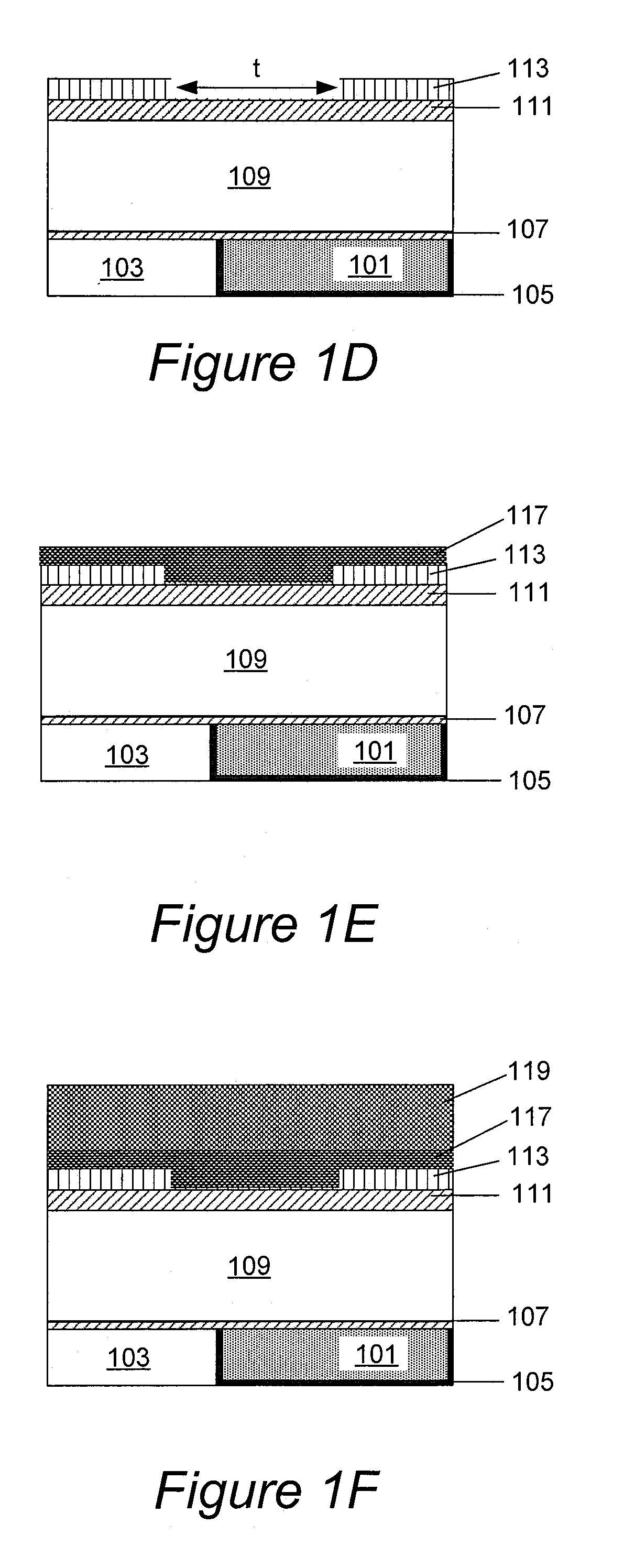Hardmask materials
a technology of hardmask and material, applied in the field of hardmask films, can solve the problems of poor alignment, low stress and high hardness (or high modulus) are especially difficult to achieve, and achieve low stress, high hardness and/or young's modulus, and poor pattern alignment in lithography
- Summary
- Abstract
- Description
- Claims
- Application Information
AI Technical Summary
Benefits of technology
Problems solved by technology
Method used
Image
Examples
Embodiment Construction
Introduction and Overview
[0033]Hardmask films for back-end and front-end semiconductor processing applications are provided. The films comprise materials selected from the group consisting of SiCx (doped or undoped), SixByCz, SixByNz, SixByCzNw, BxNy, BxCy and GeNx.
[0034]The materials consist essentially of the elements that are recited in the corresponding formulas and optionally include hydrogen which is not explicitly recited. The subscripts x, y, z, and w indicate that the materials are not necessarily stoichiometric. The materials include dopants only if presence of dopants is explicitly mentioned. For example, undoped SiCx (silicon carbide) described herein is a material which consists essentially of silicon and carbon (not necessarily in stoichiometric proportions) and optionally includes hydrogen. Doped SiCx further includes a dopant element, such as boron, oxygen, phosphorus, or nitrogen.
[0035]In some embodiments materials provided herein have one or more of the following a...
PUM
| Property | Measurement | Unit |
|---|---|---|
| Pressure | aaaaa | aaaaa |
| Density | aaaaa | aaaaa |
| Percent by atom | aaaaa | aaaaa |
Abstract
Description
Claims
Application Information
 Login to View More
Login to View More - R&D
- Intellectual Property
- Life Sciences
- Materials
- Tech Scout
- Unparalleled Data Quality
- Higher Quality Content
- 60% Fewer Hallucinations
Browse by: Latest US Patents, China's latest patents, Technical Efficacy Thesaurus, Application Domain, Technology Topic, Popular Technical Reports.
© 2025 PatSnap. All rights reserved.Legal|Privacy policy|Modern Slavery Act Transparency Statement|Sitemap|About US| Contact US: help@patsnap.com



